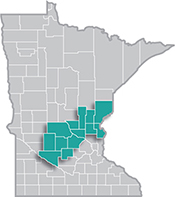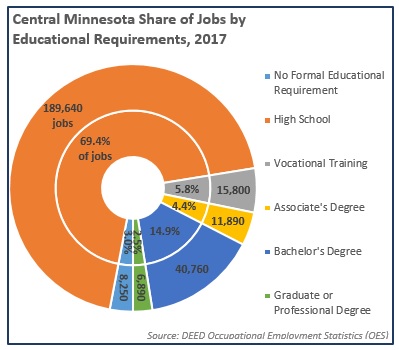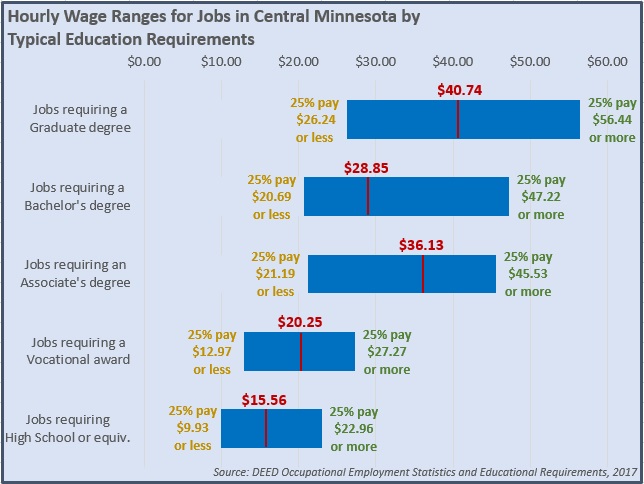 Central Minnesota is a manufacturing stronghold, with several global manufacturing firms operating there.
Central Minnesota is a manufacturing stronghold, with several global manufacturing firms operating there.
The region is especially well known for its expertise in food processing, printing, furniture manufacturing, appliances, machinery and heavy equipment manufacturing.
View our latest blogs on CareerForce. Want the freshest data delivered by email? Subscribe to our regional newsletters.
2/20/2018 10:09:32 AM
Luke Greiner
In our diverse economy, there are many ways to achieve workforce success. Employers in Central Minnesota now provide more than 270,000 jobs, and are actively seeking new workers to fill open positions.
Graduating from high school is an important first step, but from there the path to workforce success can go in many directions. Students and job seekers can go straight to work, into the military, on to college, start an apprenticeship, or something else, depending on their career goals.
In other words, there are many pathways into the labor market. Some are short-term solutions, while others are long-term decisions. There are costs and benefits to every approach, and there are practical steps that students and job seekers can take to make the most out of their career planning and educational investment. DEED worked with local partners, including Central Minnesota Jobs & Training Services and Career Solutions, to produce a handout that explains the career planning process in more detail.
College is an excellent way to move up career ladders and open windows of opportunity to fields that would otherwise be closed, such as nursing or engineering. Many of these occupations offer high wages and are in high demand in the marketplace. Certain careers – such as dentists, lawyers, and school teachers – require a college education, while other jobs – including cost estimators, sales representatives, and correctional officers – do not. Students and job seekers might be surprised to learn that well over half of all jobs in Central Minnesota can begin with a high school diploma or less, and only about one-third require college (Figure 1).

While data show that hourly wages rise for each additional level of education completed, there are opportunities for jobs that provide livable wages at every level of education, including many that boast strong current and future demand in every region of the state (Figure 2).

To that end, students and job seekers can sort through data from DEED's Occupational Employment Statistics tool to see the highest paying jobs in the Central region sorted by educational requirements. For example, 140 different occupations requiring just a high school diploma earned more than $50,000 per year in Central Minnesota, including electrical powerline installers and repairers, construction equipment operators, loan officers, structural iron and steel workers, office managers, insurance sales agents, and cement masons. Likewise, median annual wages ranged from $32,500 to almost $80,000 for jobs requiring an associate degree.
Contact Luke Greiner at 320-308-5378.